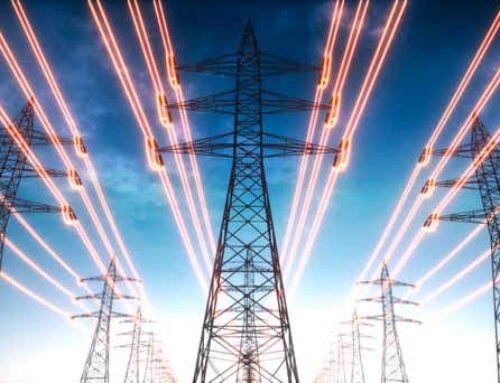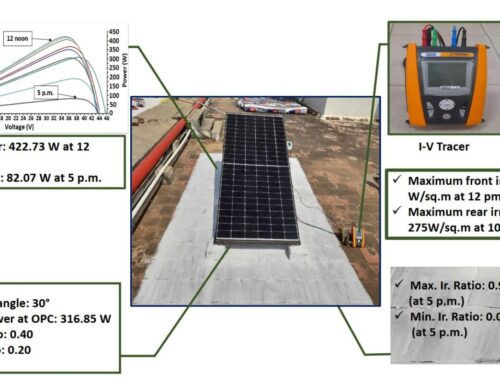A New Ray of Light
October 18, 2024
Wilson Chang, CEO of Sunrock Distributed Generation, highlights the role of solar and storage in the US’s journey to net zero and the opportunity this offers to investors.
Electricity demand is increasing dramatically due to widespread adoption of artificial intelligence, crypto, electric vehicles, and the shift towards a digital world. In the US, it is estimated that electricity consumption will increase by approximately 50% by 2036 and more than double by 2050 (compared to a 2020 baseline). Even if we put a pin in the climate crisis for a moment, the fact is that building a traditional power station takes years to complete and costs multiple millions of dollars. Remove the pin and it’s clear that ‘more of the same’ simply won’t work. To achieve the US government’s ambitious target to reach net zero by 2050, we need to ramp up renewable energy production, and we need to do it quickly.
A large part of the challenge we are facing lies with aging electrical grids. The reality is that in many countries – including the US – legacy transmission infrastructure is no longer fit for purpose. Many of these systems were built decades ago to power a world that is very different from the increasingly electrified one we find ourselves in today. The fragility of these systems is particularly exposed during extreme weather events. For example, the deep freeze in Texas in 2021 and the 2022 summer heatwave in California which caused widespread power outages affecting millions of homes and businesses. Outages also result in price surges, bringing more pain for consumers who are already being hit hard by inflationary price hikes, especially since the start of the conflict in the Ukraine. Today, approximately half of retail energy prices are driven, not by the cost of energy, but by costs associated with aging transmission infrastructure.
One solution to this energy challenge lies in behind-the-meter rooftop solar. By equipping every building in the U.S. with solar panels, we could boost the country’s generating capacity by 30%, directly addressing the energy demands of data centres and other high-consumption sectors. This represents a substantial investment opportunity of more than a trillion dollars. However, solar is just one part of a much more complex – and compelling –
clean energy future. Solar serves as the entry point to a more efficient, cleaner, and more reliable energy grid. Every US$1 of behind-the-meter commercial solar spent today will lead to another US$3 of storage, virtual power plant, electrification, and additional infrastructure, representing a multi-trillion dollar opportunity for investors.
Powering the big switch
Globally, investment in renewables has ramped up considerably over the last nine years as a range of stakeholders, from governments to large corporations, look to stake their claim in the new energy future. In the US, the biggest step change came in 2022. The signing of the Inflation Reduction Act (IRA) is expected to unleash US$1.2 trillion of government spending and tax cuts into the economy, aimed at a broad spectrum of renewable energy technologies including solar. According to the Solar Energy Industries Association (SEIA), 155 gigawatts of new solar energy production has been announced across the solar supply chain since the IRA passed. In the next decade, the IRA will lead to 48% more solar deployment than would otherwise be expected under a no-IRA scenario.
Reshuffling the energy pack
According to data from the Federal Energy Regulatory Commission (FERC), solar is now on track to become the US’s second largest source of capacity, behind only natural gas, within three years. This represents a major reshuffling of the energy production makeup. Historically, hydroelectric has dominated low-carbon electricity generation, at its peak accounting for almost half of renewable energy generation worldwide. However, challenges caused by aging infrastructure – much like for traditional power plants – and climate change-driven drought, have significantly stunted the industry’s expansion in recent years.
In comparison, the potential for solar technology appears limitless. Although 70% of commercial buildings in the US are considered suitable to install solar, only 3.5% of commercial buildings had installed solar as of 2020, with more recent insights suggesting that penetration has still yet to exceed 5%. This leaves a vast potential for growth in the installed base. Most flat commercial rooftops can be installed with solar panels and turned into highly-productive power plants. Solar also has advantages over wind and other generation in that it can be built on site where it is most valuable, and in the majority of smaller scale projects, it does not require advance planning permission.
Solar industry tailwinds
The IRA is expected to reduce the price of solar panels to pennies per watt by the end of this decade. However, falling costs are not the only tailwinds propelling the solar market forward. Technological advancements, particularly in solar inverters, is creating systems that are capable of harvesting more power, accelerating the ROI period for system owners. Similarly, improvements in installation practices are making it possible to put solar in places we simply couldn’t before.
High-rise apartment blocks are a prime example. Typically, these buildings have a high energy consumption but a relatively small roof space on which to install solar panels. The solution? Mount the panels in vertical arrays on the walls of the building to maximise energy production. Other examples include the growing use of AgriPV, also known as agrivoltaics, an innovative practice which enables farmers to harvest clean, renewable solar electricity and agricultural crops from the same land.
Solar lighting the way
Financial backing and collaboration are crucial to support the expansion and sustainability of renewable energy projects, creating opportunities for investors large and small. Solar is a rapidly maturing and reliable technology that offers steady returns over long periods of time (typically 25 years+). This is especially appealing to institutions such as insurance companies who are looking to invest in long-yield assets that align with the duration profile of their liabilities.
As the world continues to transition towards a more sustainable future, investors are increasingly recognising the scalability and profitability of the commercial solar market. Until relatively recently, investor focus tended to be on large-scale projects. However, this is beginning to change as investors look to diversify their renewables portfolios and move into previously untapped sectors. This trend is being given extra impetus by the arrival of innovative funding models which are designed to help small-to-medium sized businesses unlock access to solar and storage. By eliminating the financial and logistical barriers that the likes of non-profit organisations and the education sector can experience, this under-served but high-demand market can offer investors significant portfolio growth with a reliable ROI.
In an uncertain world, there are a few things that we can be certain of: demand for electricity will continue to increase, and so too will the price of grid-supplied power; meanwhile the cost of producing and storing energy from the sun will continue to fall. To meet the US’s power challenges head on, we need to increase solar penetration on commercial buildings from the current figure of 3.5% to closer to 50%. This is a thrilling challenge that represents a multi-trillion opportunity for investors. However, perhaps most compelling of all is the opportunity it gives us to light up local communities with access to clean, low-cost power and to build greater grid resilience for the people that need it the most.

Search
RECENT PRESS RELEASES
Related Post


